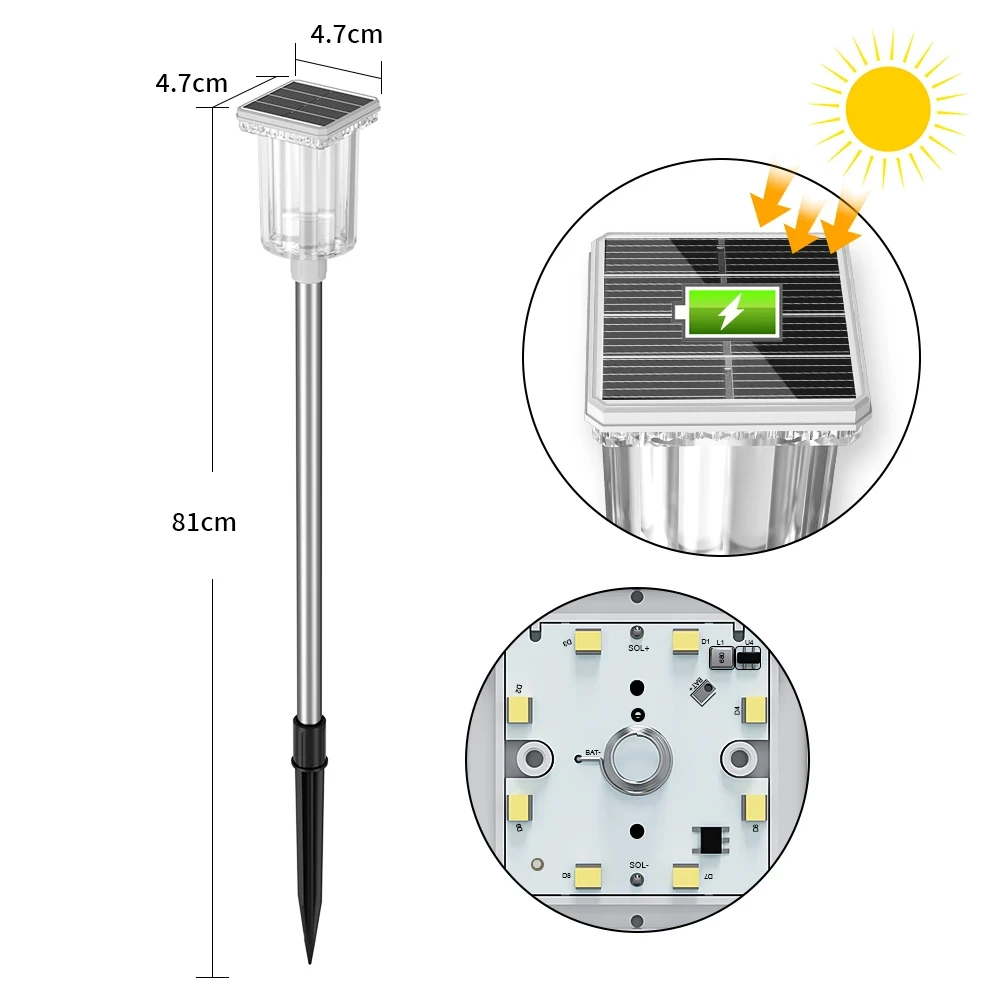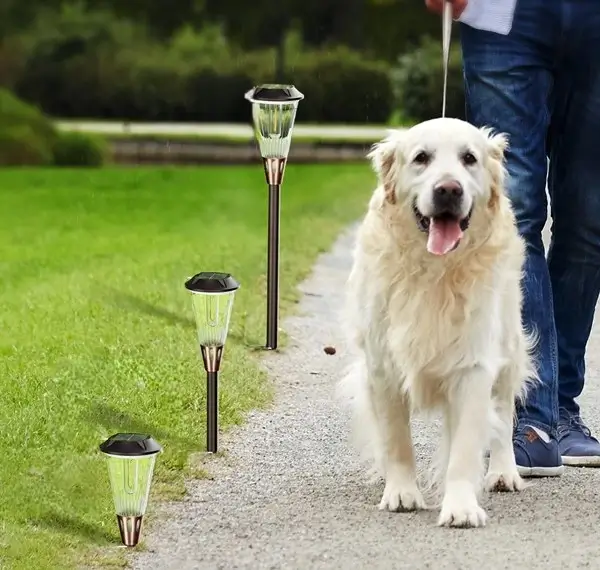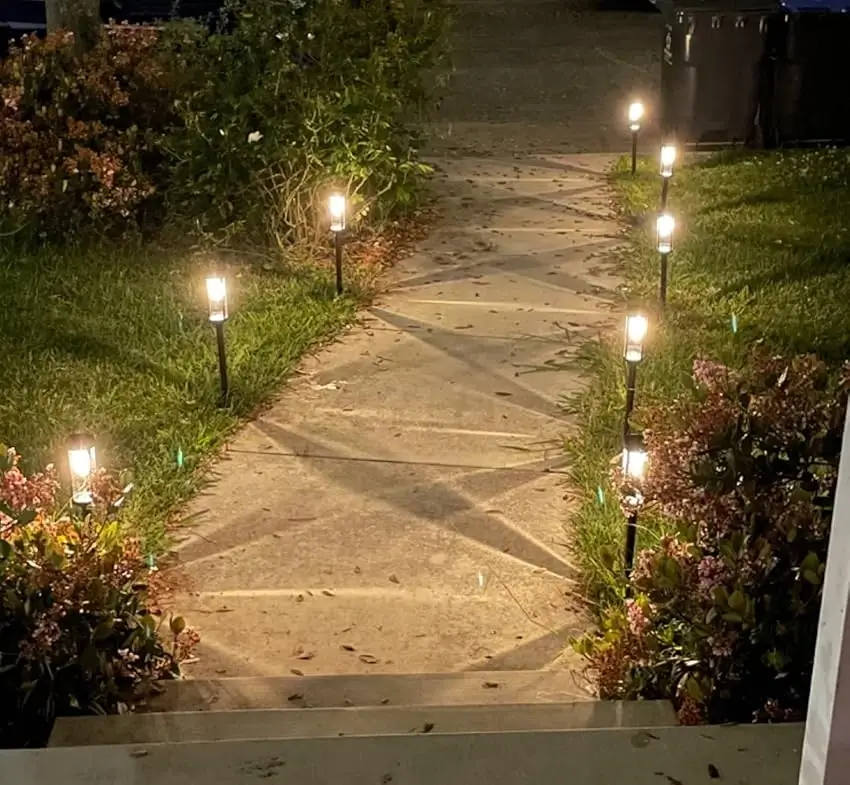Solar garden lights have gained popularity as an eco-friendly lighting solution for illuminating outdoor spaces like patios, pathways, and gardens. Powered by solar energy and equipped with rechargeable batteries, these lights are portable, making them a favorite for travelers looking to enhance temporary outdoor setups or bring them as gifts. However, when it comes to air travel, a common question arises: can you take solar garden lights in hand luggage? This article explores the regulations, safety considerations, and practical tips for traveling with solar-powered lights, ensuring compliance with airline and international travel guidelines while maintaining their durability.

Understanding Solar Garden Lights and Their Components
To determine whether solar garden lights can be carried in hand luggage, it’s essential to understand their components. A typical solar garden light consists of a solar panel, a rechargeable battery, an LED light source, a controller, and a lamp housing. The solar panel converts solar energy into electricity, stored in the rechargeable battery—often nickel-metal hydride (NiMH) or lithium-ion batteries—for nighttime use. The controller manages power flow, and the lamp housing protects the components. These elements, particularly the battery, influence whether the lights are permitted in carry-on luggage.
Airline Regulations for Carrying Solar Garden Lights
The primary concern when packing solar garden lights in hand luggage is the rechargeable battery, as aviation authorities like the Transportation Security Administration (TSA) and the International Air Transport Association (IATA) have strict rules for batteries in air travel. Below, we break down the regulations and considerations:
1. Battery Type and Restrictions
Most solar garden lights use NiMH or lithium-ion batteries, which are subject to specific airline regulations:
- NiMH Batteries: These are generally safe and permitted in both hand luggage and checked baggage without restrictions, as they pose minimal risk of overheating or fire. Most budget solar garden lights use NiMH batteries, typically AA or AAA sizes with low capacity (e.g., 600-1200 mAh).
- Lithium-Ion Batteries: These are common in higher-end solar-powered lights. The IATA allows lithium-ion batteries with a capacity of up to 100 watt-hours (Wh) in carry-on luggage, provided they are installed in the device or carried as spares in protective cases. Most solar garden light batteries are well below this limit (e.g., 3.7V, 600-2000 mAh, equating to 2-7 Wh), making them compliant for hand luggage.
To calculate the watt-hours of a lithium-ion battery, multiply the voltage (V) by the ampere-hours (Ah). For example, a 3.7V, 1000mAh battery equals 3.7 Wh, which is safe for carry-on luggage. Always check the battery specifications in the product manual or on the lamp housing.
2. TSA and International Guidelines
The TSA permits solar garden lights in hand luggage as long as the battery complies with safety regulations and the device poses no security risk. The solar panel, LED light, and controller are non-hazardous and typically allowed. However, international travel may involve stricter rules depending on the country or airline. For instance, the European Union Aviation Safety Agency (EASA) and other regional authorities align with IATA guidelines but may require batteries to be removed and carried separately in protective packaging.
3. Airline-Specific Policies
While TSA and IATA provide general guidelines, individual airlines may have additional restrictions. For example, some low-cost carriers limit the number of spare rechargeable batteries in carry-on luggage. Before traveling, check your airline’s website or contact their customer service to confirm policies on solar-powered lights. Reputable brands like Bitpott often include travel compliance information in their product documentation.
Can You Pack Solar Garden Lights in Checked Luggage?
While solar garden lights are generally safer in hand luggage, they can sometimes be packed in checked luggage, depending on the battery type. NiMH batteries are unrestricted in checked baggage, but lithium-ion batteries must typically be carried in carry-on luggage to reduce the risk of fire in the cargo hold. If the solar garden light has an integrated lithium-ion battery that cannot be removed, it may be allowed in checked luggage if the battery is under 100 Wh and fully discharged. However, to avoid complications, it’s best to carry solar garden lights in hand luggage where possible.
Practical Tips for Traveling with Solar Garden Lights
To ensure a smooth travel experience with solar garden lights, follow these practical tips:
1. Verify Battery Specifications
Before packing, confirm the rechargeable battery type and capacity. For lithium-ion batteries, ensure the watt-hours are below 100 Wh. If the solar garden light uses removable batteries, consider carrying spares in a protective case to comply with IATA rules. Label the batteries with their specifications to simplify security checks.
2. Secure the Lights
Protect solar garden lights from damage during travel by wrapping them in bubble wrap or placing them in a padded bag. The solar panel and lamp housing can crack under pressure, so avoid overpacking your carry-on luggage. If the light is disassemblable, separate the solar panel and battery for easier inspection.
3. Check International Regulations
If traveling internationally, research the destination country’s regulations on solar-powered lights and rechargeable batteries. Countries like Australia and Japan have strict battery import rules, which may affect solar garden lights. Websites of aviation authorities or embassies provide up-to-date information.
4. Prepare for Security Screening
At airport security, solar garden lights may attract attention due to their electronic components. Place them in a separate tray during screening to facilitate inspection. If asked, explain that the lights are solar-powered and contain compliant rechargeable batteries. Carrying the product manual or a specification sheet can help clarify details for security personnel.
5. Test Before Travel
Ensure your solar garden lights are functional before packing. Charge them in sunlight for 6-8 hours and test the LED light to confirm the solar panel and battery are working. Faulty lights may raise concerns during security checks or fail to serve their purpose at your destination.

Potential Challenges When Traveling with Solar Garden Lights
While solar garden lights are generally travel-friendly, some challenges may arise:
- Size and Weight: Larger solar garden lights, such as those with oversized solar panels or heavy lamp housing, may exceed carry-on luggage size limits. Check your airline’s baggage dimensions to avoid issues.
- Customs Restrictions: Some countries restrict the import of electronic devices or rechargeable batteries due to environmental or safety concerns. Research customs regulations to avoid confiscation.
- Fragility: The solar panel and lamp housing are susceptible to damage in cramped bags. Use protective packaging to maintain the durability of solar lights.
Alternatives to Traveling with Solar Garden Lights
If bringing solar garden lights in hand luggage seems impractical, consider these alternatives:
- Purchase at Destination: Buy solar garden lights at your destination to avoid travel hassles. Retailers like Amazon or local hardware stores often stock solar-powered lights.
- Use Battery-Powered Alternatives: If solar energy isn’t essential, opt for LED lights powered by standard batteries, which are easier to transport.
- Ship in Advance: For extended stays, ship solar garden lights to your destination via a courier service, ensuring compliance with shipping regulations for rechargeable batteries.
Environmental and Practical Benefits
Carrying solar garden lights in hand luggage supports eco-friendly lighting by allowing you to use sustainable illumination at your destination. These lights reduce reliance on grid electricity, lowering your carbon footprint. They’re also versatile for camping, vacation homes, or gifting, making them a practical travel item when packed correctly.
Advances in Solar Garden Light Design
Modern solar garden lights are increasingly travel-friendly. Compact designs with foldable solar panels and lightweight lamp housing make them easier to pack in carry-on luggage. Advances in solar technology, such as monocrystalline solar panels, improve efficiency, while lithium-ion batteries with battery management systems (BMS) enhance safety for air travel. Some models even feature detachable batteries, simplifying compliance with IATA regulations.
Special Considerations for International Travel
When traveling internationally, regulations may vary significantly. For example, the European Union follows EASA guidelines, which align with IATA but may require additional documentation for lithium-ion batteries. In contrast, countries like China or India may have stricter import rules for solar-powered devices. Always check with the airline and destination country’s aviation or customs authority to avoid delays or confiscation.
Conclusion
Yes, you can take solar garden lights in hand luggage, provided their rechargeable batteries comply with TSA and IATA regulations. NiMH batteries are unrestricted, while lithium-ion batteries under 100 Wh are typically allowed in carry-on luggage. By verifying battery specifications, securing the lights, and researching airline and international rules, you can travel confidently with solar-powered lights. With proper care, these eco-friendly lighting solutions will enhance your outdoor spaces wherever you go, combining portability with sustainability. Whether for camping, gifting, or temporary setups, solar garden lights are a practical and environmentally conscious choice for travelers.


Leave a Reply